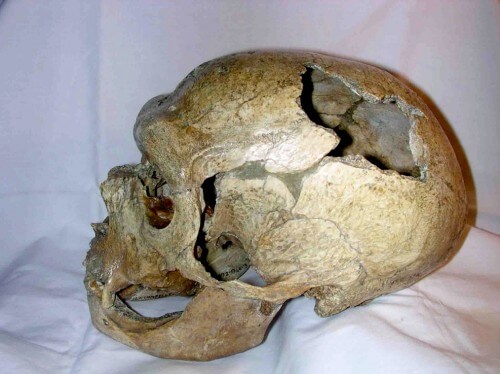Neanderthals were similar to us in their relationship to the dead

About 60,000 years ago, in a small limestone cave in the center of today's France, the Neanderthals dug a grave and buried an elderly tribe member in it. This is revealed by excavations at the famous archaeological site of La Chapelle-au-Sainte, where a Neanderthal human skeleton was found in 1908, and this has important implications for our understanding of the behavior and mental abilities of our closest evolutionary relatives.
Some archaeologists have long argued that some of the remains of Neanderthal man have evidence of burial, a practice considered one of the key characteristics of modern man's behavior. But on the other hand, there were those who claimed that the archaeological excavations at those sites were conducted a long time ago, using outdated methods that obscure the facts.
In recent years, researchers have discovered convincing evidence that the Neanderthal man was characterized by other modern customs, such as body decorations and the preparation of sophisticated tools. The Neanderthals did this before humans, anatomically defined as modern humans, invaded their habitat, which suggests that the Neanderthal developed a cultural tradition independently, and did not learn it from the new and intelligent immigrants.
In the renewed excavation of a cave in France, more bones and teeth were discovered, as well as stone tools and remains of animals. William Rando of New York University and his colleagues discovered some signs that the pit where the Neanderthal skeleton was found was, at least partially, adapted for burial, and that it was not a completely natural depression in the ground. They also insisted that carnivores appeared to have chewed and gnawed the remains of the animals, while the bones of the skeleton remained intact, which suggests that the body was covered quickly, close to death, as in a deliberate burial. Rando and his colleagues reported their findings in the January 2014 issue of the Proceedings of the National Academy of Sciences (PNAS).
Ironically, it was the original discovery at La Chapelle-au-Sainte, in the early 20th century, that made Neanderthal man notorious as a mindless savage. Shortly after the discovery, the French paleontologist Marcelin Boll reconstructed the skeleton and presented a stooped and stooped individual with bent knees, a short neck and a skull low in the forehead. This is how the image of the Evil Caveman was born. Later, scientists determined that the skeleton belonged to an elderly male who suffered from severe arthritis.
More of the topic in Hayadan:
- Special to the scientist site: Did Neanderthals and modern man meet for the first time in Israel?
- Neanderthal lineages reconstructed in the human genome
The article was published with the permission of Scientific American Israel
